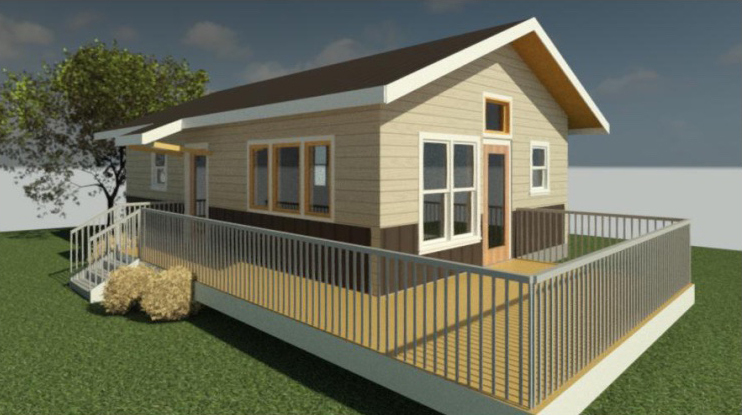
Petersburg has a tight housing market – last year a survey found the town would need an additional 300 homes in the next decade. But a new local program aims to make it easier for people to add small homes, also known as Accessory Dwelling Units, or ADUs, to their property. The Borough of Petersburg has developed detailed, pre-permitted blueprints that are available to residents free of charge. Community Development Director Liz Cabrera said she hopes it provides people with affordable, doable housing opportunities.
“When you’re trying to address housing situations, it’s multifaceted, so there’s no single solution, she said. “And in this case, we’re trying to make something that takes a lot of the upfront work out of the picture and be able to get someone a little bit further along in getting the project done.”
Cabrera said when you put a tiny home on a lot next to a larger house, you can use the already-installed infrastructure, like roads, sewer and water, of the larger home. That saves a lot of money.
“What it does really well, I think, is that it addresses the issue of the cost of infrastructure development and it gives you an option for increasing the number of housing units without having to build out your infrastructure,” she said.
Cabrera worked with two local architecture firms to develop the plans for four different tiny homes, which range in size from about 350 to 650 square feet. The houses are designed for Petersburg’s climate, and built to the town’s code. Cabrera said she hopes the houses will be used in a variety of ways.
“Just providing a different option for housing, and that can be multi generational, it could be a rental income, it could be having older parents aging in place – there’s lots of options there,” she said. “So really, it’s up to the property owner, and it just gives them a leg up in that process.”
Anyone who lives in Petersburg’s Service Area 1 can apply for the plans. Cabrera said homes built outside the service area would open the borough up to liability, since the borough can’t enforce code outside Service Area 1. Applicants will pay a building permit fee once the borough confirms that zoning codes are met. Cabrera said the borough used money from the American Rescue Plan Act, or ARPA, to fund the development of the plans. She said now that the plans are completed, the program will essentially be free to maintain.
Cabrera said that while she can’t be sure, she thinks this plan is the first of its kind in the state.











